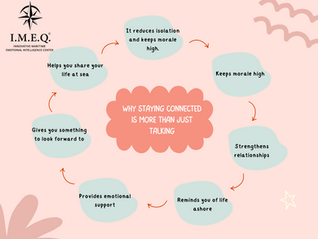Mastering the Art of Conflict Resolution
- IMEQ CENTER

- Jan 26, 2024
- 4 min read

My name is Dr. Panagiotis Karagiannis, and I am a counselling psychologist with an interest in couples therapy, trauma, personality disorders and coaching. As such, I am also very keen to assist people to tackle the art of resolving a conflict.
There are many reasons for conflict to emerge and sometimes it is a good way of discharging the negative emotions that we experience but this interaction is not allowing individuals to find a solution and promote a healthy relational pattern. Before we proceed by providing a simple solution let me first present a simple interactional model that comes from Schema Therapy and more specifically as suggested by Stevens, DiFrancesco and Roediger.
The Perspective – Not Understanding vs Misunderstanding.
Everyone has their own view towards a certain situation, and this is affected by our past experiences and how we filter the world. To give you a simple example someone who has been treated repeatedly unfairly during childhood might be more vulnerable to unfairness during adulthood. As such, we could suggest that everyone has their perspective informed and filtered by their past experiences. When we argue and are emotionally activated it is very hard to understand the perspective of the other individual, especially if the other one is not given the chance to explain themselves, be heard or guards their own view of the situation for whatever reason. This creates misunderstandings which have a detrimental effect on interpersonal relationships. By accepting that there are multiple perspectives that we might not be able to see immediately we broaden our “horizons” and create a new resource for our lives. It’s better to accept that you do not understand than to misunderstand. Misunderstandings create conflicts and acceptance of not understanding can ease to a good extent the emotional activation that misunderstanding might create.
The Autonomic Nervous System and Interactions
I am not going into too much depth here but will cover some essential information. Every human being has a part of the nervous system that regulates many processes of our body involuntarily, like for example heartrate. We cannot control it directly. There are two branches on that system one that activates us (ex. Fight) and the other one calms us down (ex.Submit). We will assign the red color for the activating part and the blue color for the calming part. As such the sympathetic branch (Active Red Branch) is responsible for active behaviors (we will call those red behaviors) and the parasympathetic (Passive Blue Branch) for more passive (we will call those blue behaviors). You can think of the two branches using the “gas” (Red - Sympathetic) and the “break” (Blue - Parasympathetic) pedals of a car.
The Model of Interaction
Now let’s use the simple example of two dogs seeing each other on the road (For simplicity, I adore dogs). The dogs will most probably become red activated and start fighting each for dominance. At this point three things can happen. One of the dogs will submit to the more dominant dog, one of the dogs might run away from the conflict or they will continue to fight indefinitely. Similarly, human beings when interacting end up to three different possible outcomes. Their need for dominance might be triggered which will fuel emotions like anger/disgust and become red activated leading to overcompensatory behaviours like, fighting for control. On the other hand, their need for attachment might be triggered, thus fuel emotions like sadness/fear and then become blue parasympathetic activation and thus submit and cooperate with the other individual. Finally, they can withdraw by either freezing or fleeing from the situation.
There are many problems with either fighting or withdrawing. Conflict (Red Active behaviours like those fueled by anger) does not allow for constructive problem solving and is detrimental for the relationship. Withdrawing will probably lead one individual become even more red activated and start losing their trust towards the other individual.
The Solution
Now let’s answer the million-dollar question. What to do in such a case. First, we need to accept that there is another point of view that we might not understand or agree with that is shaped by the experiences of the other person that are different to us. It is very important we all have our traumas, and we are a package of experiences that shape how we view the world. Now the second step is to call for a small timeout with a commitment to reconnect (Remember if we withdraw the other individual will become more active and even loose trust) with the individual who we conflict with once we manage our emotions of anger/disgust or other emotions that will lead us to become emotionally activated (Like Anger). Being on the red active side of the model presented above will lead to difficulties in our relationship with the other individual and will not allow for a constructive solution to be found. For the content to be resolved we need to be on the cooperative/submissive end.
That is all for this article please feel free to share your thoughts. Will follow up with a next article on managing the emotions before reconnecting with the other individual.
Dr. Panagiotis Karagiannis





































































































Comments